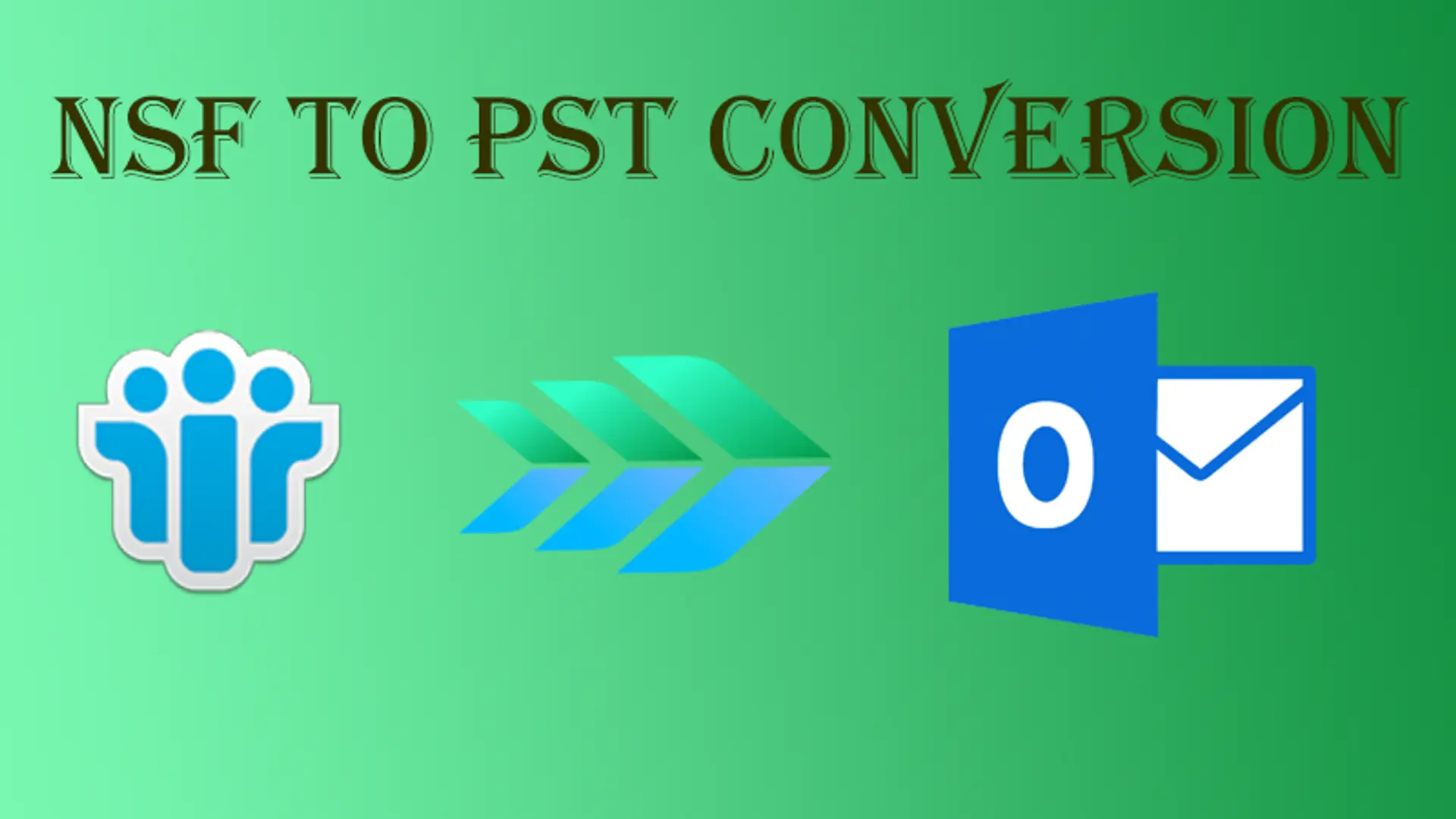

Why & How to Convert NSF to PST with Email and Contacts
Convert NSF file to PST & export Lotus Notes contacts in Outlook. Best NSF to PST Converter to migrate IBM contacts in Outlook PST format from Lotus Notes.
Covert NSF to PST, Do you think why there is need to perform this process? No, then I will explain you. MS Outlook and Lotus Notes both are desktop email clients. The Outlook is developed by Microsoft and Lotus Notes is introduced by the IBM community. Both the platform confers a prearranged and collaborative email communication environments. Lotus Notes and Outlook have some additional features (especially Outlook has more advanced features as compare to Lotus Notes) for their users. Lotus Notes works with Domino Server and Outlook works with Exchange Server.
Why there is a need to NSF to PST Conversion:
Outlook left behind the Lotus Notes by providing latest and advanced features to the users which make the user's task easy. These days the popularity of Outlook and Office 365 is increasing day by day among users. Imagine you are a Lotus Notes administrator and now the organization is shifting (migrating) towards Outlook. In this situation, it is completely impossible to open NSF file in Outlook because NSF file is not supported by MS Outlook. To access the NSF file data in Outlook you need to export Notes file in OST or PST format with their conversion methods. Apart from this, for Lotus Notes to Outlook migration there are some other factors are also responsible to execute this process.
Reasons responsible for Lotus Notes to Outlook Migration-
There are a lot of scenarios which force the users to export NSF data in Outlook format. Some of them are listed below:
Pricing Cause: Outlook comes with Microsoft Office suite (which is not so costly) so there is no need to purchase Outlook externally. In the case of Lotus Notes, the user needs to buy it after paying a huge amount.
Account synchronization: There is a difficult and technical method to synchronizing an account in Lotus Notes that requires some technical expertise, and in Outlook, users can synchronize their accounts very easily and to do so there are no requirements of any technical expertise.
Account managing: In Outlook a user can manage one and more than one accounts (of any email client) very easily and performs any tasks within the particular account at a time. In the case of Lotus Notes, an NSF user can operate a single account at a time and there is a need to change account settings and perform the synchronization process every time for each mailbox.
Interface: The outlook presents users mailbox data in a very well and an established way and provides an attractive interface for the users, whereas the interface of Lotus Notes is not so attractive and doesn’t provide various functionalities to access Mailbox data.
File saving options: An Outlook user can save their mailboxes data in two formats such as OST and PST format. Outlook creates both file format in various conditions and with different configuration methods. In Lotus Notes the user data such as emails, contacts, calendars all are stored in NSF format.
Maintenance Cost: Maintenance of the Lotus Notes is a costly task, whereas Outlook maintenance cost is very cheaper for the users. The user doesn't face so much complexity to maintain the Outlook as compare to Lotus Notes.
Valid approaches to Export NSF files in PST format-
To perform an NSF to PST conversion process here two methods are available for the Lotus Notes user which will export NSF to PST with complete Lotus Notes NSF file database.
- Manual process for Lotus Notes to Outlook Migration.
- An automated solution for NSF to PST Conversion.
Perform the Manual approach to Convert NSF to Outlook PST format:
To import NSF data in Outlook a user can follow these manual tricks and get their Lotus Notes data in PST format. The manual process creates a chance of data loss, so before performing the manual process, the user needs to take a backup of the NSF database to keep their data secure for future use.
1. Use MS Transporter tool method:
- Open Microsoft Transporter Suite.
- Create a CSV file containing the following fields:
SourceIdentity: User Email ID
SourceServer: POP Server Name or IP address
SourceLoginID: Account username to connect to the server
SourcePassword: User password
TargetIdentity: Email Address
- Click on Add Mailboxes option and choose the CSV file and click on Import option.
- Click on All mailbox option.
- Select the Migrate selected Mailbox option.
- Choose POP in Select Mailbox Type To copy the field and check the Specify Client Access Server option >> click on Next.
- Select the All email option from the Select Data Range and click on Next Button.
- Click on Migrate option after reading the summary.
- In last window click on Finish button.
Drawbacks of the transporter tool: Here are so many drawbacks of this process such as
- It doesn’t migrate more than 1500 emails.
- It doesn’t convert NSF to PST if the file size is more than 1 GB.
- It doesn’t supports bulk migration.
- Supported with only Outlook 2003 and its previous versions.
- Unable to export encrypted NSF files in Outlook PST format.
2. Use Import/Export method:
This is one more approach used to convert NSF to PST without altering its formatting and meta-data properties. To use this method for IBM Notes to Outlook conversion follow these simple steps and perform a process-
Export NSF to CSV
- Open the NSF file (you want to export in PST format) in Lotus Notes email client.
- Open the Mailbox >> click on File Menu >> click on Export option.
- Suggest a saving name to the NSF file and choose CSV (Comma Separated Value) option from file saving format.
- Select the option as per your requirements from CSV export window.
- Exported data will save at the provided location.
Import CSV in Outlook PST
- Select the File Menu option from Outlook.
- Choose the Open and Export option.
- Click on the Import/Export option.
- Choose the Import from another Program or file option from the dialog box.
- Click Comma Separated Value option and click on the Next button.
- Provide a path to CSV file and select the options as per your requirements and click on Next button.
- Give a saving location to save the file and click on Next.
- Check the checkbox and click on finish.
A Third-party solution for Lotus Notes to Outlook Conversion-
Sometimes using a manual process can be harmful to maintain the complete data and for data security. Using the manual process provides a result of data crash and incomplete data migration from "Lotus Notes to PST". To keep the data safe from these big faults use a third-party solution. There is so many tools are available in the market from where I would like to suggest you, use MailsDaddy NSF to PST Converter tool. The tool provides a complete NSF data recovery in PST format with their folder hierarchy and other HTML and meta-data properties.
Final Words:
In this article, I explained all the scenarios and reasons for the Lotus Notes to Outlook Conversion. I explained all the processes to convert NSF to PST. The manual processes are quite lengthy and time-consuming. To come out from this clumsy conditions use a reliable NSF to PST converter tool as I suggested.
I hope you find the helpful information about the NSF to PST conversion process.







